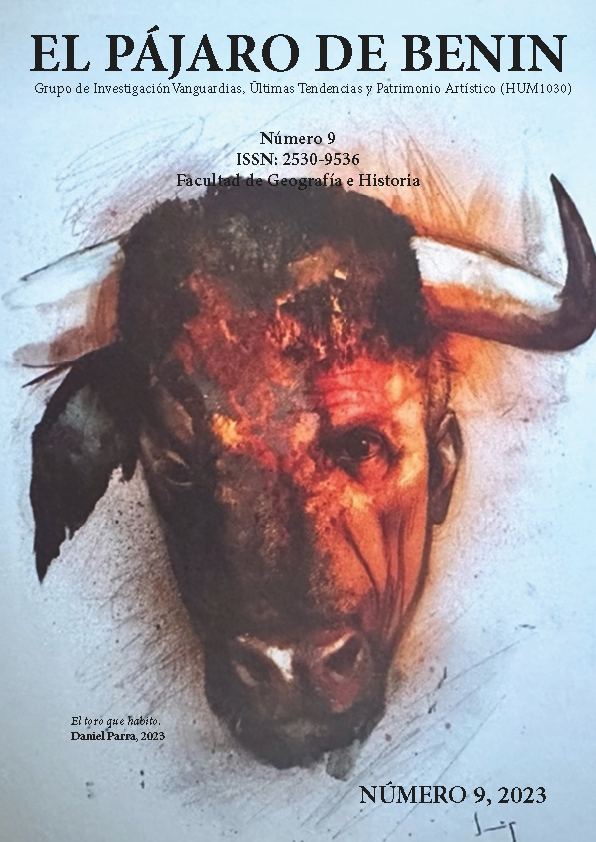Abstract
An actress and doula and a dance practitioner-feminist researcher who have known each other for a long time continued to dialogue about their common interests and pursuits, but a recent encounter raises a powerful concern. from the idea of a staging around death, a relevant concern arises: how to address everyone's journey towards death, including those whose right to die was taken away from them? how can we approach our deaths through imaginative journeys, making an enormous difference to those who did not have the right to a life and death free of violence? how to place a topic as strong as death from the douleo and how to insert femicides there? the creative process continued its course, building languages with other artists and managed to present itself under the name of la casa sin bernarda, however, the knot was not untied with the work. douleo and feminism are the places where we feel the need to continue exploring.
Keywords: feminism; doula; pain; violence; death; grief
Nota Aclaratoria : Nos parece importante aclarar que cier
References
Ahmed, Sara. (2017). Vivir una vida feminista. Ediciones Bella Terra.
Bach, Ana. (2010). Las voces de la experiencia. El viraje de la filosofíafeminista. Buenos Aires: Editorial Biblos.
Bancoff, Aliza. (2016). World Health Organization (WHO) Recommends Doulas Attend All Births Globally - International Doula Institute. International Doula Institute - Committed to Developing Caring, Compassionate Doulas. https://internationaldoulainstitute.com/2016/03/world-health-organization-who-recommends-doulas/
CCECR. (2022, 19 de noviembre). FUERA DE (2023) - CCECR. CCECR. https://ccecr.org/evento/fuera-de-2023/
CCECR. (2023, 31 de octubre). La Casa sin Bernarda - CCECR. CCECR. https://ccecr.org/evento/la-casa-sin-bernarda/
Corfield, J. (2023, October 31). Doula. Encyclopedia Britannica. https://www.britannica.com/topic/doula
Deathcafe. (2017). What is Death Cafe. Deathcafe.com. https://deathcafe.com/what/
Federici, Silvia. (2010) El Calibán y la bruja. Mujeres, cuerpo y acumulación originaria. Tinta Limón Editorial.
Federici, Silvia. (2022) Ir más allá de la piel : repensar, rehacer y reivindicar el cuerpo en el capitalismo contemporáneo. Tinta Limón Editorial.
Fernández, Ana. (2023, 2 de junio). Frente a la muerte, cualquiera puede ser Adela Semanario Universidad. Semanario Universidad. https://semanariouniversidad.com/cultura/frente-a-la-muerte-cualquiera-puede-ser-adela/
García, Federico. (2007). La casa de Bernarda Alba. GZ Editores.
Gutman, Laura. (2017). La maternidad y el encuentro con la propia sombra. Editorial Booket.
La Casa sin Bernarda [@lacasa_sinbernarda] (2023, 22 de noviembre). Fotos y vídeos de Instagram. Instagram.com. https://www.instagram.com/lacasa_sinbernarda?igshid=YTQwZjQ0NmI0OA%3D%3D&utm_source=qr
Oliva Barboza, P. (2020). Archivo diverso Costa Rica parte 2: Pinceladas de arte con diversidad. Revista Rupturas, 10(2), 143–169. https://doi.org/10.22458/rr.v10i2.3023
Öcalan, Abdullah. (2013). Liberando la vida: la revolución de las mujeres. Intenational Initiative.
Oliva, Patricia. (2021). Desde lo profundo de sus obras. Un análisis feminista sobre la expropiación del cuerpo de las mujeres. Acer-vos, 17. https://rio.upo.es/xmlui/handle/10433/11918
Rubin, Gayle. (1986). El tráfico de mujeres: notas sobre la “economía política” del sexo. Nueva antropología 8 (30): 95-145
Teatrocr. (2023, 9 de junio). La Casa sin Bernarda. Blogspot.com; Blogger. https://teatrocr.blogspot.com/2023/06/la-casa-sin-bernarda.html

